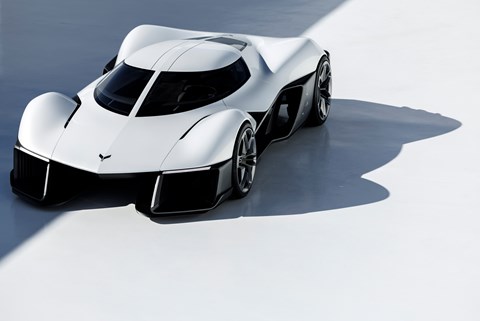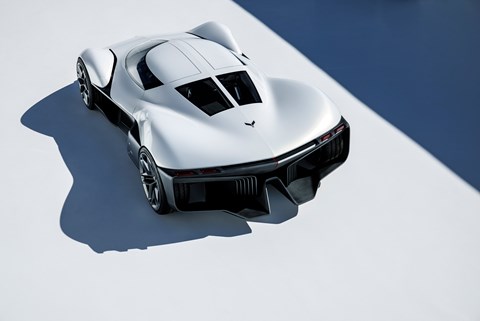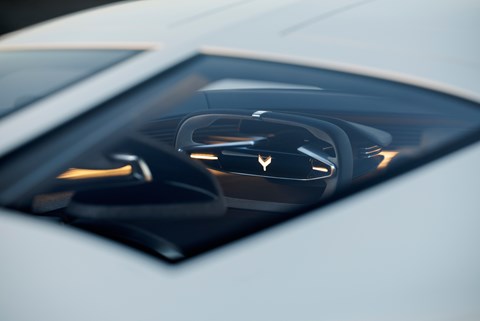► GM Design reimagines the Corvette
► Concept project led by Julian Thomson…
► …and 30-strong team at new UK studio
You’re looking at an electric hypercar Corvette. Not only that; you’re looking at one that’s had all of its design done in the UK – not the States.
You might recognise the name of the designer leading the UK-based team on the project: Julian Thomson, the designer of the original Lotus Elise, and whom spent several years at Jaguar Land Rover working with Ian Callum. Thomson and his UK team are based at GM’s new Advanced Design Centre in Leamington Spa.
‘We talk about brand experts here with Corvette, but when I did the Elise, we didn’t have brand experts,’ says Thomson. ‘We went back to basics and the legacy, and about what that company should be about. That’s what we do with design all the time – we’re thinking about what really is the essence of what the brand is and how we can take it forward into the future.’

While this car, we’re told, isn’t actually the next-generation Corvette, Thomson says: ‘there’s no doubt that Corvette is strong enough to do other things that stretch the brand.’
This Corvette concept is one of a series of design studies being created by GM Design teams all around the world. ‘As part of the Corvette creative study, we asked multiple studios to develop hypercar concepts, which we’ll see more of later this year,’ says GM Design head, Michael Simcoe.

Explaining the reasoning for creating these concepts, Thomson adds: ‘it comes down to this thing about when you buy an exotic sports car – you want to be part of the tribe, and you want to know what’s going on. You want confidence in the car you’re buying that it’s good, and that the brand is going to get even better in the future.’
So, what’s special about this one, then? Well, on first glance, it doesn’t look that much like a conventional Corvette – but then you see some of the details. The split window, which is named Apex Vision, is a nod to the Corvette Stingray from the 60s and acts as a spine for the whole car.

While the Corvette concept has been shaped using both digital tools and clay modelling, the vision is for such a car to be crafted using 3D printing – also known as additive manufacturing. The whole structure of the car is built in such a way, with the bodywork having also been designed to reduce the amount of panels.
There are some techy specs, too. As well as race-spec pushrod suspension, this Corvette concept car is fan-assisted, helping to improve aero and keep the car glued to the road while travelling at high speeds. The flowing underbody is nicknamed Aero-Duality.
We’ll see more concepts sprout from GM’s global design teams in the months to come.